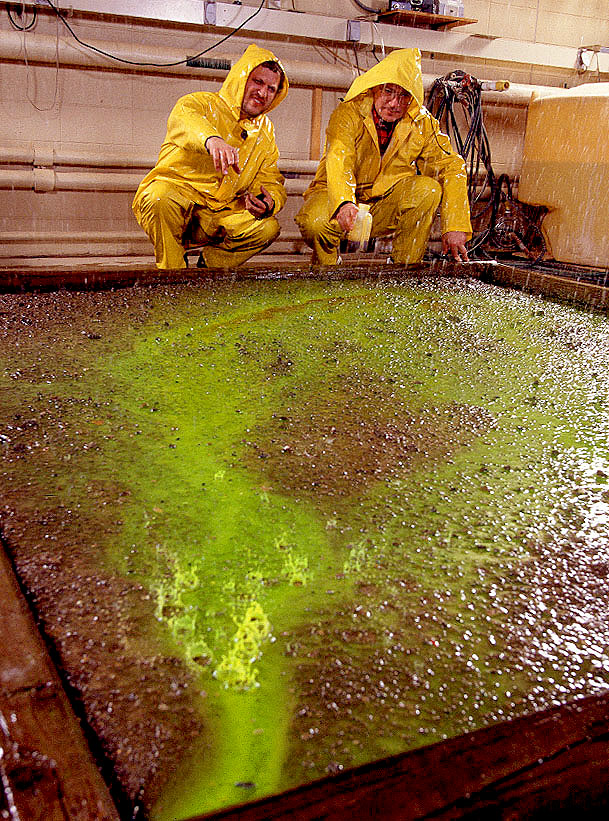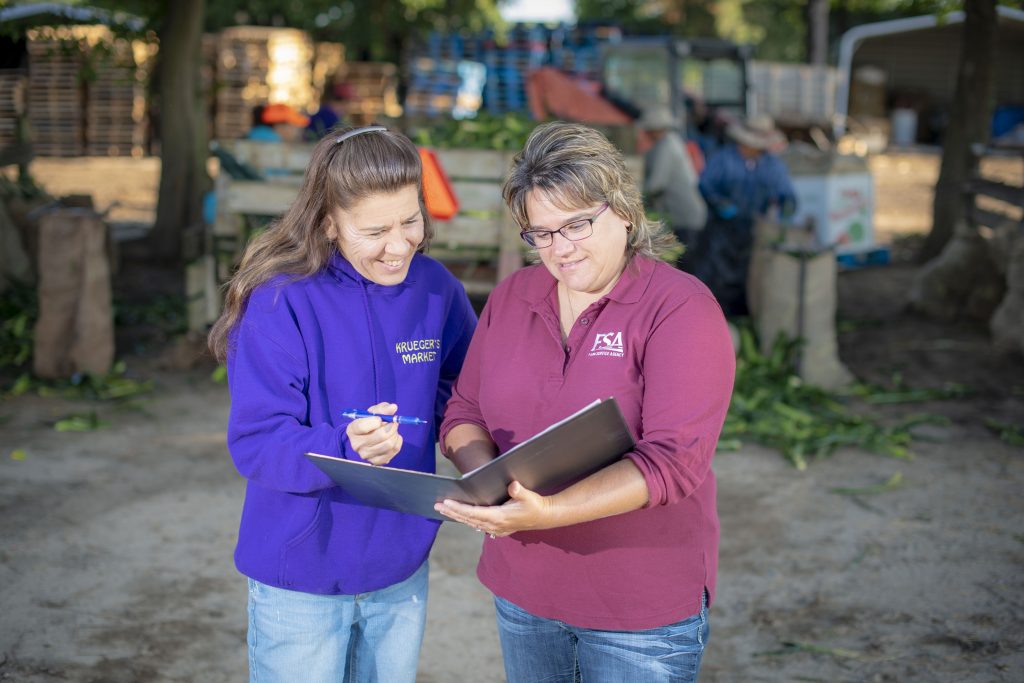11 Conservation Agencies
Colby Moorberg; Allison Aubert; Matthew Brungardt; Elliott Carver; Katie Fross; Teddy Gillespie; Sam Indorante; Alec Lester; Megan Owens; Emma Purvis; Laura Starr; Daniel Stich; Colten Sutterby; Mackenzie Tynon; and August Williams
Abbreviations
BIA – Bureau of Indian Affairs
BIE – Bureau of Indian Education
BLM – Bureau of Land Management
DOI – Department of the Interior
EPA – US Environmental Protection Agency
FAO – Food and Agriculture Organization of the United Nations
NACD – National Association of Conservation Districts
NCSS – National Cooperative Soil Survey
NIFA – National Institute of Food and Agriculture
NPS – National Parks Service
NRCS – Natural Resources Conservation Service
PDF – Portable Document Format
SCS – Soil Conservation Service
SES – Soil Erosion Service
UN – United Nations
URL – Uniform Resource Locator
US – United States
USACE – US Army Corps of Engineers
USDA – US Department of AgricultureUSFS – US Forest Service
USFWS – US Fish and Wildlife Service
USGS – US Geological Survey
Conservation Districts

NACD. 2019a. About Districts. https://www.nacdnet.org/about-nacd/about-districts/.
NACD created this web page to depict the primary purpose of a conservation district: “to coordinate assistance from all available sources – public and private, local, state and federal – to develop locally-driven solutions to natural resource concerns.” Almost every county in the US has a conservation district, a total of almost 3,000 districts. The exact services that districts provide to members are also found on this web page.
NACD. 2019b. About NACD. https://www.nacdnet.org/about-nacd/.
In this web page, NACD provides an overview of their organization. NACD is a nonprofit organization comprising more than 17,000 governing officials that coordinate conservation efforts in nearly 3,000 conservation districts across the US. Their work consists of publishing information from research and news to distribute to the members of their districts, providing various services to members, and working with the people at the local, state, and federal levels to promote conservation practices. Their mission is “to promote the wise and responsible use of natural resources for all lands representing locally-led conservation districts and their associations through grassroots advocacy, education and partnerships.”
NACD. 2019c. Hall of Distinction. https://www.nacdnet.org/about-nacd/nacd-history/hall-of-distinction/.
This web page created by NACD is dedicated to the five most influential district official leaders in NACD’s history. These individuals shaped effects and the direction of conservation districts in the US. Their information and accomplishments are found under the picture of each individual.
NACD. 2019d. NACD History. https://www.nacdnet.org/about-nacd/nacd-history/.
This NACD web page provides details on the history of conservation districts, as well as how the NACD came about. Inspired by the devastation of the Dust Bowl, President Franklin Delano Roosevelt pushed for soil conservation districts to be adopted across the nation to prevent such catastrophic events. The NACD was originally founded by 18 representatives from 17 states in 1946. The names of the founding members, along with their pictures, are also provided on this page.
Land Grant Colleges and Universities

Association of Public Landgrant Universities. 2019. Land-Grant University FAQ. https://www.aplu.org/about-us/history-of-aplu/what-is-a-land-grant-university/.
This Association of Public Landgrant Universities web page defines the term “Land-Grant University” and explains why they were created, where they are, who oversees the institutions, and when the Land-Grant Act passed.
Obama, B. 2012, July 2. Morrill Act 150th Anniversary – Message from the President. https://www.usda.gov/sites/default/files/documents/morrill-act-150-anniversary-president-message.pdf.
This announcement from President Obama in honor of the 150th anniversary of the signing of the Morrill Act recognizes the legacy of the Land-Grant system and the impact Land-Grant colleges and universities have had on the US. The URL offers a direct download of a PDF of this resource.
USDA National Agricultural Library. 2019, February 10. Morrill Land Grant College Act. https://www.nal.usda.gov/morrill-land-grant-college-act.
This web page features the text of the Morrill Land Grant College Act, as well as a link to a photocopy of the act from the Library of Congress.
USDA NIFA. 2019. Land-Grant Colleges and Universities. https://nifa.usda.gov/land-grant-colleges-and-universities.
This USDA NIFA web page lists all Land-Grant colleges and universities in the US by state and territory.
National Cooperative Soil Survey
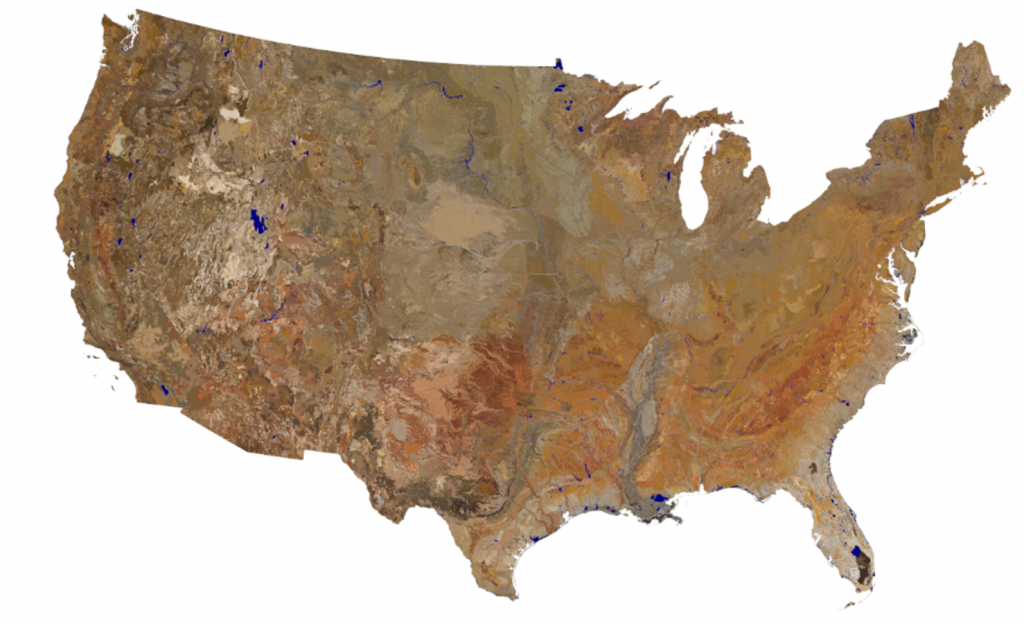
USDA NRCS. 2019. National Cooperative Soil Survey. https://www.nrcs.usda.gov/wps/portal/nrcs/main/soils/survey/partnership/ncss/
This site explains the structure of the National Cooperative Soil Survey (NCSS). The NCSS is a nationwide partnership of federal, regional, state, and local agencies and private entities and institutions. This partnership works to cooperatively investigate, inventory, document, classify, interpret, disseminate, and publish information about soils. NCSS standards are common or shared procedures that enhance technology transfer, data sharing, and communication among soil survey participants.
Gardner, D. R. 1998. The National Cooperative Soil Survey of the United States. Cambridge: The National Cooperative Soil Survey of the United States and Harvard University. https://www.nrcs.usda.gov/Internet/FSE_DOCUMENTS/stelprdb1044424.pdf.
This thesis was written by Gardner for his doctor of public administration from Harvard University. It was originally published in 1957 and was later reprinted by the USDA NRCS to facilitate broader distribution and readership. The 276 page thesis provides an exhaustive review of the history of the NCSS, written by Gardner who had prior experience as a soil scientist with the SCS (now USDA NRCS). In his thesis, Gardner describes the origins of the soil survey, history of the soil survey from 1899-1952, the coordination of the NCSS, and the NCSS since 1952. The URL offers a direct download of a PDF of this resource.
NCSS. 2016. National Cooperative Soil Survey Strategic Plan. 7. https://www.nrcs.usda.gov/wps/PA_NRCSConsumption/download?cid=nrcseprd1134606&ext=pdf.
The NCSS Strategic Plan outlines the NCSS vision, mission, and goals. It also lists objectives and action items for the strategic planning committee. Members of the strategic planning committee are listed on the final page of the plan. The URL offers a direct download of a PDF of this resource.
USDA NRCS. 2019. National Cooperative Soil Survey. https://www.nrcs.usda.gov/wps/portal/nrcs/main/soils/survey/partnership/ncss/.
This USDA NRCS web page is the primary web page for the NCSS. It includes links to the NCSS Strategic Plan, and to Parts 600, 601, and 602 of the National Soil Survey Handbook, which guides the operation of the cooperating organizations in the NCSS. The page also includes links to NCSS conferences, newsletters, contact information, and other useful information.
USDA NRCS. 2017b. Part 601 – National Cooperative Soil Survey Organization Subpart A – General Information. In Title 430 – National Soil Survey Handbook, 601-A.1-601-A.4. https://directives.sc.egov.usda.gov/OpenNonWebContent.aspx?content=41513.wba.
This section of the National Soil Survey Handbook defines the National Cooperative Soil Survey as a nationwide partnership of federal, regional, state, and local agencies as well as private entities that cooperate to investigate, inventory, document, classify, interpret, disseminate, and publish information on soils of the US. The section outlines the responsibilities of the NCSS, the USDA NRCS, and other cooperating agencies and organizations in conducting soil surveys of the US.
USDA NRCS. 2019b. The National Cooperative Soil Survey (NCSS). http://nrcs.maps.arcgis.com/apps/Cascade/index.html?appid=90b5990ab2b24b78b1968ed70a53817a.
This ArcGIS story map website describes what the NCSS is and what it does. Information on how to find out more about the NCSS is also provided through a link to the full NCSS website. This website provides an excellent overview of the NCSS with great pictures and brief text.
Tennessee Valley Authority
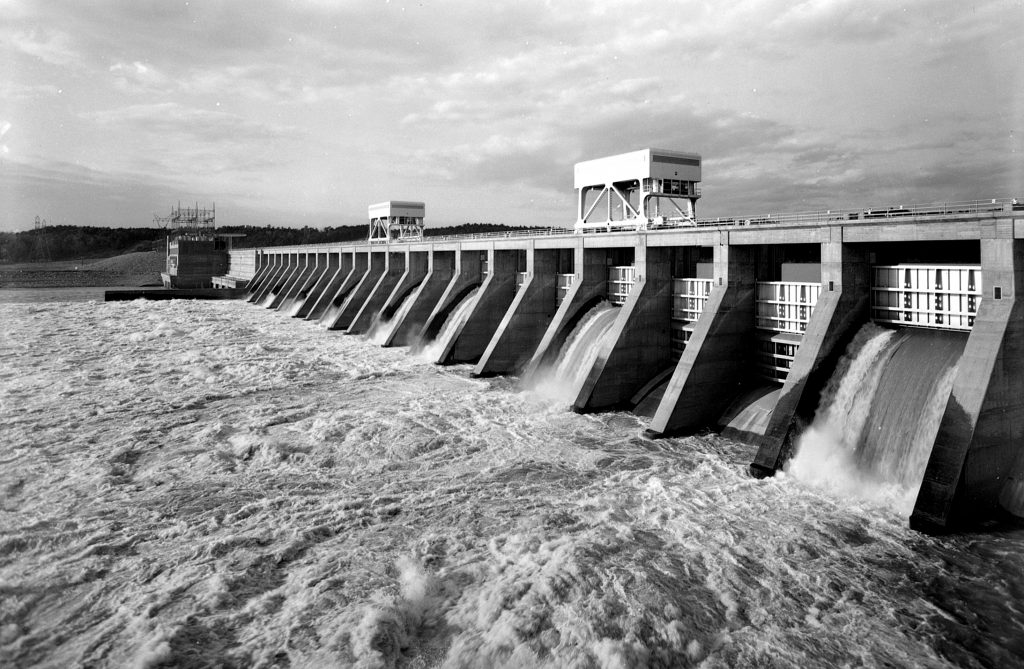
TVA. 2018. TVA at a Glance. 2. Knoxville, TN: Tennessee Valley Authority. https://www.tva.gov/file_source/TVA/Site%20Content/About%20TVA/TVA%20at%20a%20Glance.pdf.
This two-page information sheet about the TVA summarizes the mission of the TVA and the role it plays in energy and environmental and economic development for the people of the Tennessee River Valley. It also summarizes the service area served by the TVA and describes how the agency is funded.
TVA. 2019a. About TVA. https://www.tva.gov/About-TVA.
This TVA web page describes the TVA is a corporate agency of the US. The agency is self-funded and derives revenue from the sale of hydroelectric power. It also provides flood mitigation and land management, operating in Alabama, Georgia, Kentucky, Mississippi, North Carolina, Tennessee, and Virginia. This page includes links to more information about the agencies activities in each of those states, as well as a link to download a two-page “TVA at a Glance” information sheet about the agency. Links are also provided to more information about the agency’s leadership, advisory councils, history, and more.
TVA. 2019b. Our History. https://www.tva.gov/About-TVA/Our-History.
This TVA web page outlines the history of the agency dating back to the passage of the TVA Act of 1933. Each decade since is briefly summarized, with a link to a page with more information on TVA history from each decade. Links are also provided to the TVA Act, as well as to a comprehensive bibliography of TVA history.
US Department of Agriculture
Agriculture Research Service
USDA ARS. 2019a, March 20. Organizational Chart. https://www.ars.usda.gov/people-locations/organizational-chart/.
This web page displays an organizational chart of the USDA ARS. The USDA ARS Office of the Administrator oversees central program planning, administration and support, and field research implementation and information delivery. USDA ARS offices and regional field laboratories are listed.
USDA ARS. 2019b, April 30. History of Research at the USDA and ARS. https://www.ars.usda.gov/oc/timeline/chron/.
This web page includes a timeline of the 150+ year history of the USDA ARS dating back to 1862 when the USDA ARS was founded. Hyperlinks for each decade lead to pages that list each of the major discoveries of USDA ARS researchers, along with pictures of many of the discoveries for each period.
USDA ARS. 2019c, June 25. ARS Administrator’s Council. https://www.ars.usda.gov/oc/agency/ac/admcouncil/.
This web page displays the name, title, and portrait of each of the USDA ARS administrators, national program staff, area and National Agricultural Library, headquarters staff, and other agency leaders. A downloadable version of the council is also available.
USDA ARS. 2019d, August 2. About ARS. https://www.ars.usda.gov/about-ars/.
This page from the USDA ARS website describes the USDA ARS as the “chief scientific in-house research agency” within the USDA. The page also includes the agency’s mission statement, vision statement, and core values. Additional information about the agency leadership, research, budgeting, and partnership is provided. The page also identifies the USDA ARS as one of four USDA Research, Education, and Economics mission areas, along with USDA NIFA, USDA ERS, and USDA NASS.
USDA ARS. 2019e. Plans & Reports. https://www.ars.usda.gov/docs/plans-reports/.
The USDA ARS web page provides brief descriptions of and links to the USDA ARS Strategic Plan and the most recent USDA ARS Science Report.
Farm Service Agency
USDA FSA. 2019b. About FSA. https://www.fsa.usda.gov/about-fsa/index.
This web page contains links to information about the effects of the USDA FSA, its structure and organization, biographies, strategic plan, history and mission, budget and performance, and careers.
USDA FSA. 2019c. Agency History. https://www.fsa.usda.gov/about-fsa/history-and-mission/agency-history/index.
This web page presents a synopsis of the history of the USDA FSA and outlines the functions of the agency and changes over time. The USDA FSA was formed in 1933 during the Great Depression as a part of President F. D. Roosevelt’s New Deal. It was originally called the Resettlement Administration but was later renamed the Farm Service Agency in 1937. Its purpose was to relocate entire farm communities to areas where farming could be carried out more profitably. They also had programs to provide credit, farm and home management planning, and technical supervision, just to name a few.
USDA FSA. 2019d. History and Mission. https://www.fsa.usda.gov/about-fsa/history-and-mission/index.
This web page lists the USDA FSA mission statement, agency vision, societal vision, and values. The USDA FSA’s mission is to equitably serve “all farmers, ranchers, and agricultural partners through the delivery of effective, efficient agricultural programs for all Americans.”
USDA FSA. 2019e. Strategic Plan. https://www.fsa.usda.gov/about-fsa/strategic-plan/index.
The most recent USDA FSA strategic plan can be downloaded from a link on this web page. The fiscal year 2016-2018 strategic plan includes a message from the administrator followed by an overview, mission and vision statements, core values, external risk factors, and four strategic goals.
USDA FSA. 2019f. Structure and Organization. https://www.fsa.usda.gov/about-fsa/structure-and-organization/index.
This web page presents the organization of the USDA FSA. The agency reports to the Secretary of Agriculture and the Undersecretary of Agriculture for Farm and Foreign Agricultural Services. The national administration is in Washington, D.C., with computational and statistical work in Kansas City, MO. Farm policy and USDA FSA programs are implemented through state and 2,124 field offices based in counties throughout the country and US territories. The web page states that an organizational chart is impending.
Forest Service
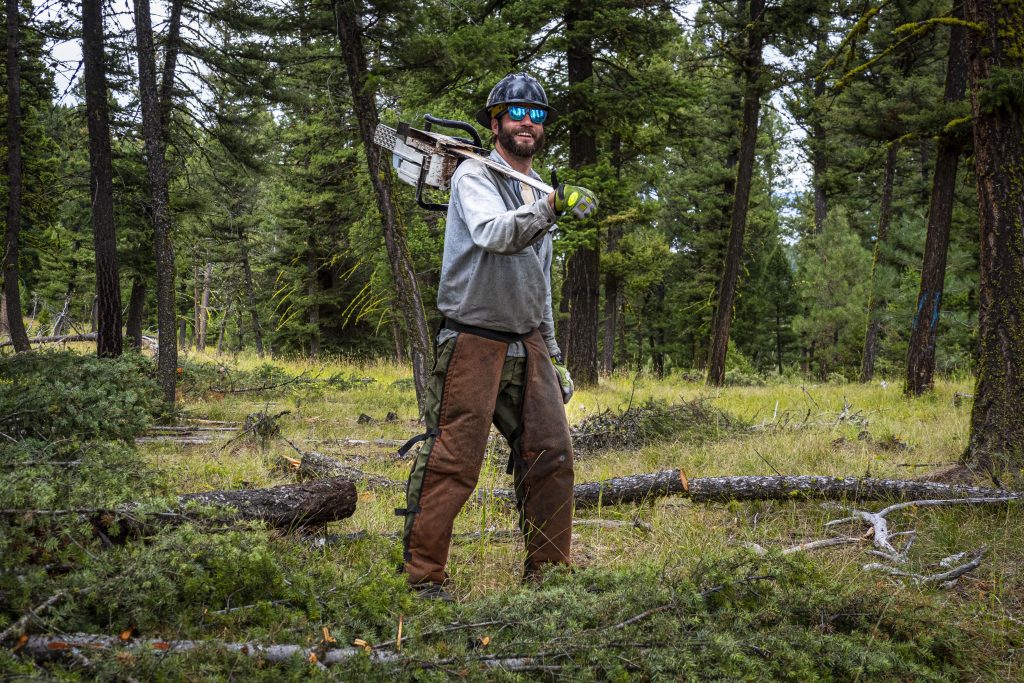
Forest History Society. 2019. US Forest Service Headquarters Collection. https://foresthistory.org/research-explore/us-forest-service-history/.
This web page from the Forest History Society highlights the USFS Headquarters. The page includes links to notable figures, places, policy and law, publications by the department, and a database to search all of these categories.
Los Padres National Forest. 2019. History & Culture. https://www.fs.usda.gov/main/lpnf/learning/history-culture.
This web page from the Los Padres National Forest details the history and culture of the USFS. The page concisely covers the who, what, when, where, and why of the entire USFS.
National Archives and Records Administration. 1985. Visions of the Wild. https://archive.org/details/gov.archives.arc.13521.
In this video, Peter Thomas recounts the beginnings of the US wilderness movement and its transformation into the USFS. The history, goals, and mission of the early administration are covered in depth in this 57 minute documentary.
USDA Forest Service. 2019. National Accomplishment Reports. https://www.fs.fed.us/visit/passes-permits/reports.
This USFS web page provides links to reports summarizing accomplishments of the USFS as presented to Congress. National reports are produced every three years. Additional regional reports are also provided.
Williams, G. W. 2005. USDA Forest Service: The First Century. Washington, D.C.: USDA Forest Service Office of Communication. https://www.fs.fed.us/sites/default/files/media/2015/06/The_USDA_Forest_Service_TheFirstCentury.pdf.
Written by the USFS historian, this book documents and analyzes the first 100 years of the agency. Williams organized the 100 years into nine periods. For each period, major events, notable people, and notable legislation and regulation are summarized. The table of contents also identifies locations of many notable special topics within the nine listed periods. The URL offers a direct download of a PDF of this resource.
National Institute of Food and Agriculture

USDA NIFA. 2019a. About NIFA. https://www.nifa.usda.gov/about-nifa.
This site summarizes the responsibilities and goals of USDA NIFA. The site outlines what USDA NIFA is, what it does, and how it works. A USDA NIFA fact sheet is provided at the end.
USDA NIFA. 2019. Impacts. https://www.nifa.usda.gov/impacts.
This web page provides links to the USDA NIFA Annual Report, the USDA NIFA Fresh From the Field bulletin, and highlights from USDA NIFA-funded research. A search box allows quick searches by keyword, priority area, or US state and territory.
USDA NIFA. 2019b. NIFA Fact Sheet. https://www.nifa.usda.gov/resource/nifa-fact-sheet.
This one-page fact sheet answers questions about USDA NIFA, which is the primary extramural funding agency of the USDA. The agency invests in research related to agriculture, education, and extension. The fact sheet identifies and summarizes the nine priorities of USDA NIFA. It also lists the USDA NIFA mission and vision statements and summarizes its annual budget.
USDA NIFA. 2019. Programs. https://www.nifa.usda.gov/programs.
This web page provides a brief description of and links to web pages for each of the USDA NIFA funding programs. A search feature is provided to quickly identify appropriate programs.
Natural Resources Conservation Service
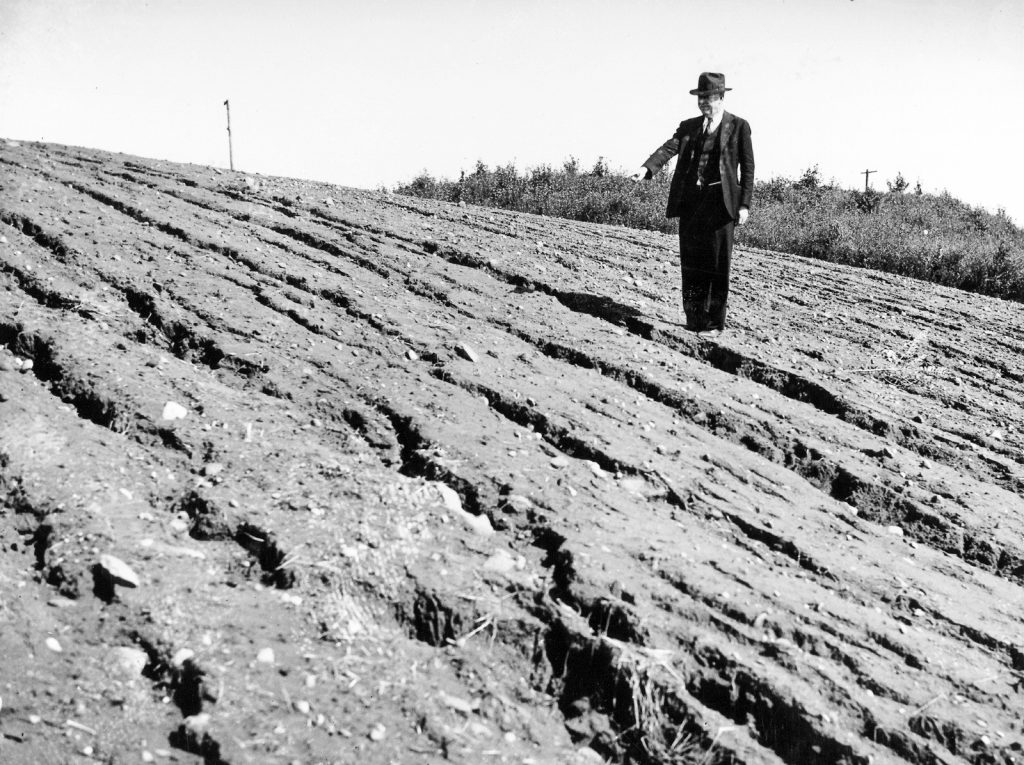
Helms, D. 2008. Hugh Hammond Bennett and the creation of the Soil Conservation Service. Journal of Soil and Water Conservation 65(2):37A-47A. https://doi.org/10.2489/jswc.65.2.37A.
This article is a continuation of the historical developments discussed in “Hugh Hammond Bennett and the creation of the Soil Erosion Service,” Journal of Soil and Water Conservation, Volume 64, Number 2, pages 68A-74A. The article discusses the events of September 19, 1933, to April 27, 1935, during which time Hugh Hammond Bennett and colleagues in the SES established demonstration projects. The SES was the precursor to the SCS (now the USDA NRCS).
USDA NRCS. 2023a. About NRCS. https://www.nrcs.usda.gov/wps/portal/nrcs/main/national/about/.
This USDA NRCS web page summarizes the agency’s role in providing farmers, ranchers, and forest managers with free technical assistance to voluntarily put conservation on the ground. The page provides quick access to pages detailing getting started, technical assistance, financial assistance, locating service centers, tools and resources, news, and USDA NRCS history.
USDA NRCS. 2023c. More Than 80 Years Helping People Help the Land: A Brief History of NRCS. https://www.nrcs.usda.gov/about/history/brief-history-nrcs.
This article provides a brief history of USDA NRCS from its beginnings as the SES, its transformation into the SCS, and its current form, the USDA NRCS. For more than 80 years, the USDA NRCS has been a pioneer in conservation, working with landowners, local and state governments, and other federal agencies to maintain healthy and productive working landscapes.
USDA NRCS. 2023d. Leadership. https://www.nrcs.usda.gov/about/leadership.
This web page provides the leadership structure of the NRCS starting at the national level, including the chief, associate chief, regional conservationists, and deputy chiefs.
USDA NRCS. 2023e. Programs. https://www.nrcs.usda.gov/programs-initiatives.
This site describes the USDA NRCS’s conservation programs that help land managers reduce soil erosion, enhance water supplies, improve water quality, increase wildlife habitat, and reduce damage caused by floods and other natural disasters.
US Department of Defense
US Army Corps of Engineers

USACE. 2019a. Brief History of the Corps. https://www.usace.army.mil/About/History/Brief-History-of-the-Corps/.
This web-based publication summarizes the history of the USACE from its formation by the Continental Congress in 1775 through present day. Congress’s goal was for the agency to contribute to both military and civilian projects. This web page provides a concise history of the USACE and notes key functions of the agency in the 1900s.
USACE. 2019b. Civil Works. https://www.usace.army.mil/Missions/Civil-Works/.
This web page outlines the civil missions of the USACE. This includes serving the public; developing and managing the nation’s waterways; supporting commercial navigation; restoring, protecting, and managing aquatic ecosystems; managing flood risk; and providing engineering and technical services. The page includes links to the Civil Works Strategic Plan, Civil Works Program Stakeholder Satisfaction Report, and other resources and reports. A side menu contains links to pages on all civil works missions.
USACE. 2019c. Environmental. https://www.usace.army.mil/Missions/Environmental/.
This USACE web page summarizes all aspects of the Environmental Program, which includes cleaning up contaminated sites, cleaning up radioactive waste, supporting the EPA superfunds program, supporting the Army with the Base Realignment and Closure Act program, ensuring facility compliance with environmental laws, and conserving cultural and natural resources.
USACE. 2019d. Leadership. https://www.usace.army.mil/about/leadership/.
This web page provides an overview of the leadership of the USACE, with pictures and biographies provided for each officer.
US Department of the Interior
Bureau of Indian Affairs
Bureau of Indian Affairs. 2019a. About Us. https://www.bia.gov/about-us.
This web page from the BIA website summarizes the history and missions of the BIA and the BIE. The web page states that the BIA is the oldest agency in the DOI. The agency provides services to 1.9 million American Indians and Alaska Natives and their communities through grants, contracts, and compacts.
Bureau of Indian Affairs. 2019b. Bureau of Indian Affairs (BIA). https://www.bia.gov/bia.
This web page presents the mission statement and history of the BIA. Its mission is “to enhance the quality of life, to promote economic opportunity, and to carry out the responsibility to protect and improve the trust assets of American Indians, Indian tribes and Alaska Natives.” It goes on to state how and why the BIA was developed. It also includes the 45 people who have served as Commissioners of Indian Affairs and the 12 people who have served as the Assistant Secretary-Indian Affairs.
Bureau of Indian Affairs. 2019c. Division of Forestry and Wildland Fire Management. https://www.bia.gov/bia/ots/dfwfm.
This web page summarizes services provided by the BIA Division of Forestry and Wildland Fire Management. The page includes overviews of the division, the Branch of Forest Resource Planning, and the Branch of Wildland Fire Management. Links to websites of those two branches are provided.
Bureau of Indian Affairs. 2019d. Division of Natural Resources. https://www.bia.gov/bia/ots/division-natural-resources.
This web page summarizes services provided by the BIA Division of Natural Resources through that division’s three branches, the Branch of Agriculture and Rangeland Development; the Branch of Fish, Wildlife, and Recreation; and the Branch of Water Resources. Links are provided for each branch’s web page.
Bureau of Indian Affairs. 2019e. Indian Affairs Organizational Chart. Bureau of Indian Affairs. https://www.indianaffairs.gov/sites/bia.gov/files/OrgChartFY18Greenbook.pdf.
This document is the organizational chart of Indian Affairs. The Assistant Secretary-Indian Affairs and the Principal Deputy Assistant oversee all dealings within the BIA and BIE. Each office and region are listed as well as who oversees them. The URL offers a direct download of a PDF of this resource.
Bureau of Indian Affairs. 2019f. Programs and Services. https://www.bia.gov/programs-services.
This web page highlights all programs and services that the BIA provides to 567 federally recognized tribes. These programs serve to assist Indian self-governance and self-determination by improving their tribal government structure, community structure, education, job training, and employment opportunities.
Bureau of Land Management
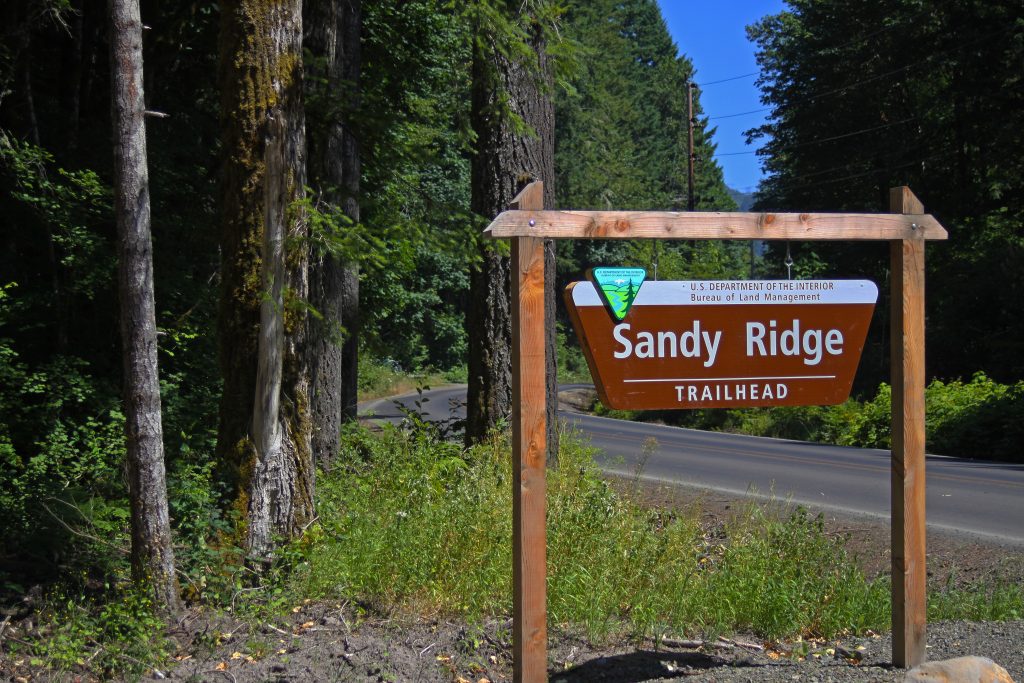
BLM. 2016a, July 19. About Overview. https://www.blm.gov/about.
This web page summarizes the BLM, its history, leadership, organization, budget, mission, laws and regulations, what land agency manages, how the agency manages that land, and more.
BLM. 2016b, August 10. About: History of the BLM. https://www.blm.gov/about/history.
This BLM web page provides an overview of the agency’s history from its origins from the General Land Office and US Grazing Service which oversaw and allotted public lands during the country’s expansion west. The BLM was created by the Truman administration in 1946 to manage the public lands that remained under federal control. It’s charge is defined by the Federal Land Policy and Management Act of 1976, which gives the BLM two mandates, to manage the public land for multiple uses, and to manage grazing on public lands.
BLM. 2016c, August 15. About: Organization Chart. https://www.blm.gov/about/organization-chart.
This web page presents the organizational chart for the BLM. The BLM is headquartered in Washington D.C. and employs approximately 10,000 people.
BLM. 2018. Our Public Land Heritage: From the GLO to the BLM. BLM. https://www.blm.gov/sites/blm.gov/files/About_historytimeline.pdf.
This BLM web page provides an overview of the agency’s history from its origins from the General Land Office and U.S. Grazing Service, which oversaw and allotted public lands during the country’s expansion west. The BLM was created by the Truman administration in 1946 to manage the public lands that remained under federal control. Its charge is defined by the Federal Land Policy and Management Act of 1976, which gives the BLM two mandates: to manage the public land for multiple uses and to manage grazing on public lands. The URL offers a direct download of a PDF of this resource.
Bureau of Reclamation
Bureau of Reclamation. 2019a. Facts. https://www.usbr.gov/main/about/fact.html.
This web page is a fact sheet that describes the Bureau of Reclamation, highlights the agency’s priorities, and identifies its current activities. The page includes a table that summarizes a variety of different topics by number.
Bureau of Reclamation. 2019b. Mission. https://www.usbr.gov/main/about/mission.html.
This web page states that the mission of the Bureau of Reclamation is to “manage, develop, and protect water and related resources in an environmentally and economically sound manner in the interest of the American public.” It begins with a brief history of the agency, followed by a description of its role as the largest water wholesaler in the US and its role in producing hydroelectric power. The page includes a map highlighting the states in which the bureau operates as well as links to the strategic plan.
National Parks Service
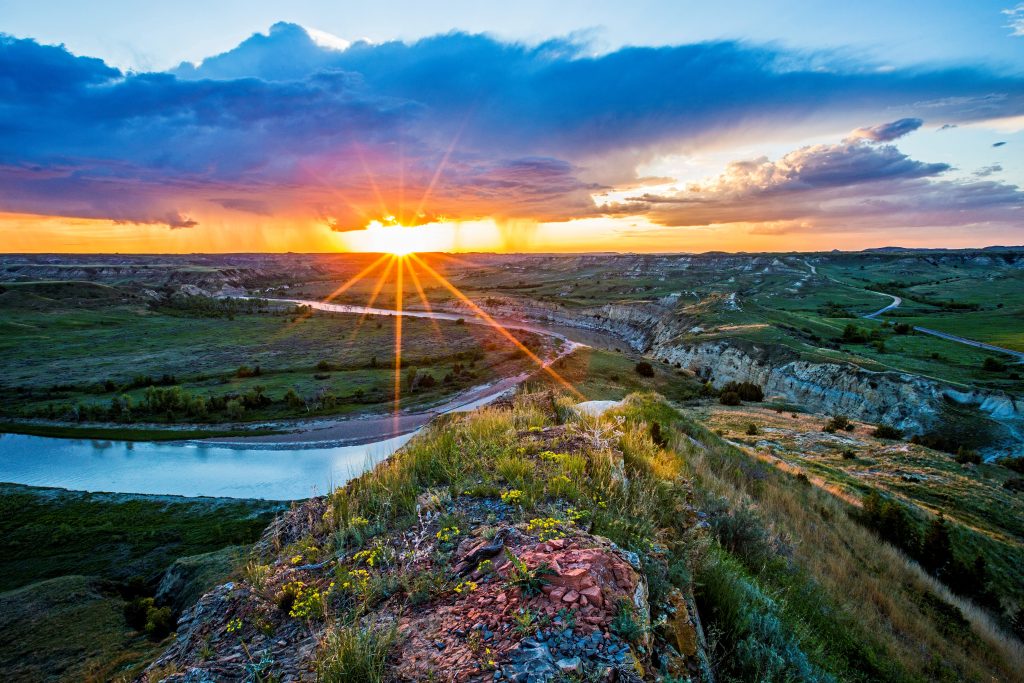
NPS. 2009, September 17. Evolution of an Idea. https://www.nps.gov/americasbestidea/templates/timeline.html.
This web page was created by the NPS for a general audience looking for information on the history of the NPS. The origins and some of the major land accumulation/park opening events are briefly covered. The page also includes a history slide show with minor events, visitor information, and pictures. The history of the NPS shows how long land conservation has been an evolving idea.
NPS. 2019, September 11. What We Do. https://www.nps.gov/aboutus/index.htm.
This web page was created by the NPS for an audience with general interest in the NPS. A mission statement is available as well as small sections on employees, organization, and other general information about the NPS. Each section is a short overview with links provided to direct readers to more detailed information about that section. This overview of the NPS gives generic information about the NPS and what its charge is.
US DOI. 2016, August 17. Turning 100: Major Milestones in the National Park Service. https://www.enewspf.com/science/environmental/turning-100-major-milestones-national-park-service/#gsc.tab=0.
This blog was created by the DOI for a general audience interested in the major accomplishments of the NPS. While the focus is accomplishments, the page also includes information on the origins and history of the NPS and some notable people. The text has links embedded leading readers to other articles related to topics on this page. The blog emphasizes the role of the NPS in soil and water conservation through conserving the national parks.
WETA, and The National Parks Film Project, LLC. 2009. The National Parks: America’s Best Idea. http://www.pbs.org/nationalparks/.
This website for the documentary series, The National Parks: America’s Best Idea, provides a range of resources on the National Parks System, many of which complement the content of the documentary series. The site includes information about the history of the parks, parks highlighted in the documentary, important people, resources for educators, and more.
US Fish and Wildlife Service
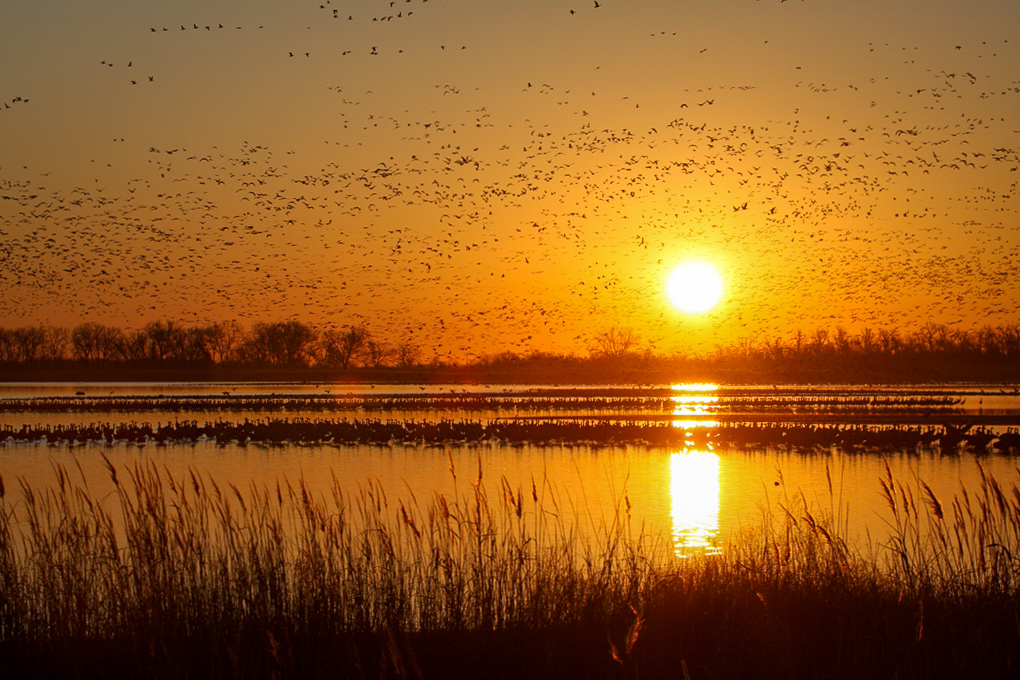
USFWS. 2018a, March 30. USFWS History: A Timeline for Fish and Wildlife Conservation. https://www.fws.gov/node/262619.
Considered the oldest federal conservation agency, FWS can trace its roots to 1871 to the creation of the U.S. Commission on Fish and Fisheries. This timeline covers 143 years (1871-2014) of events, acts, and processes that have been affected or implemented by the FWS. Example events include creating the FWS, appointing new FWS Directors, and passing the Duck Stamp Act. This resource is provided by the Natural Conservation Training Center and is suitable for those hoping to find a detailed outline of historical events associated with the FWS.
USFWS. 2018b, October 16. About the US Fish and Wildlife Service. https://www.fws.gov/help/about_us.html.
The FWS is a federal agency charged with the conserving, protecting, and enhancing habitats for fish, wildlife, and plants for the benefit of the American people. The FWS is housed within the DOI and was formed in 1940 by consolidating the Bureau of Fisheries and the Bureau of Biological Survey. Objectives of the FWS include helping develop and implement environmental stewardship for fish and wildlife, guiding conservation management practices for fish and wildlife within the US, and the administering programs to educate the public on fish and wildlife resources.
USFWS. 2019, July 17. National Organizational Chart. https://www.fishwildlife.org/application/files/9316/8124/6799/FWS_Org_Chart_-_Mar_3_2022.pdf.
Updated on a regular basis, this page outlines the organizational structure of the U.S. Fish and Wildlife Service and provides links to the web page for each division housed within. The general outline for the USFWS starts with the Deputy Director, who is supported by a series of assistant directors each of whom oversee a series of divisions. Each assistant director is aided by a deputy assistant director. The US is a vast territory to cover, so eight regional directors are also included. Regions include Pacific, Southwest, Midwest, Southeast, Northeast, Mountain-Prairie, Alaska, and Pacific Southwest. Regional directors report to the Deputy Director.
US Geological Survey
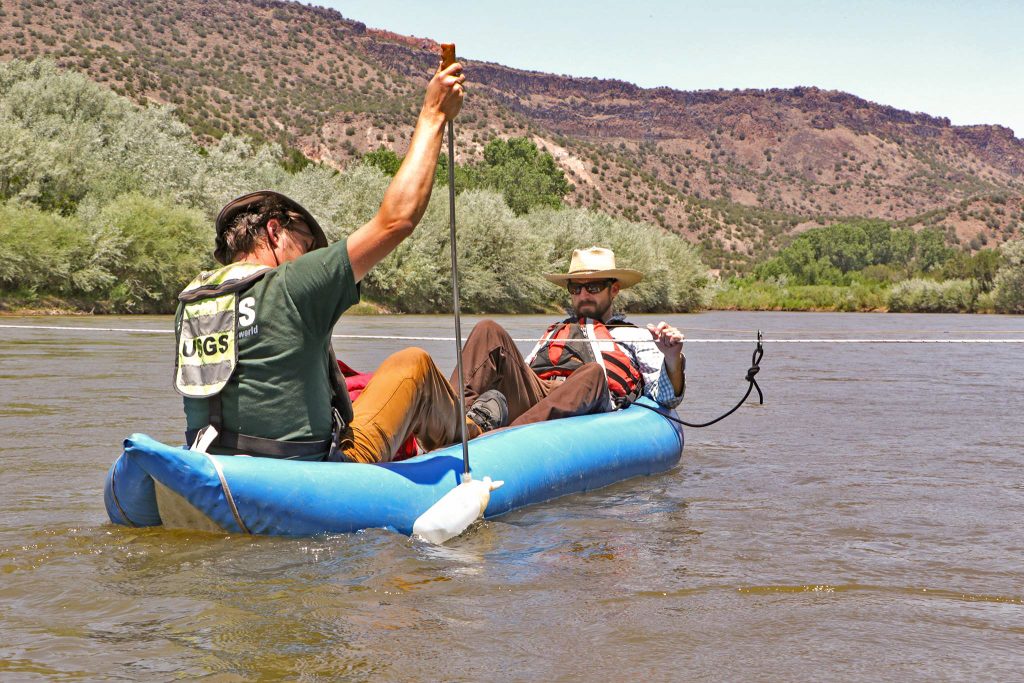
Rabbitt, M. C. 2019, September 30. US Geological Survey Circular 1050–The United States Geological Survey: 1879-1989. https://pubs.usgs.gov/circ/c1050/.
This web page is the table of contents for a web book detailing the history of the USGS. The history is divided into sixteen different eras by chapter.
USGS. 2019a. About Us. https://www.usgs.gov/about/about-us.
This web page provides a brief summary of the purpose of the USGS. It also contains links to pages with more detailed information regarding the purpose, history, and organization of the USGS.
USGS. 2019b. Key Officials. https://www.usgs.gov/about/key-officials.
This web page lists the USGS directors and the years of their terms as director. A link is provided to a biography page for each of the directors. A link to an organizational chart shows how various responsibilities are broken down among key officials.
USGS. 2019c. Organization. https://www.usgs.gov/about/organization.
This web page provides an index of information on the organization of the USGS. There are links to individual pages about mission areas, science centers, regions, and science support. There is also a link to a map showing the different regions in the current USGS organization.
USGS. 2019d. Who We Are. https://www.usgs.gov/about/about-us/who-we-are.
This web page provides a brief overview of the mission, vision, and goals of the USGS.
US Environmental Protection Agency
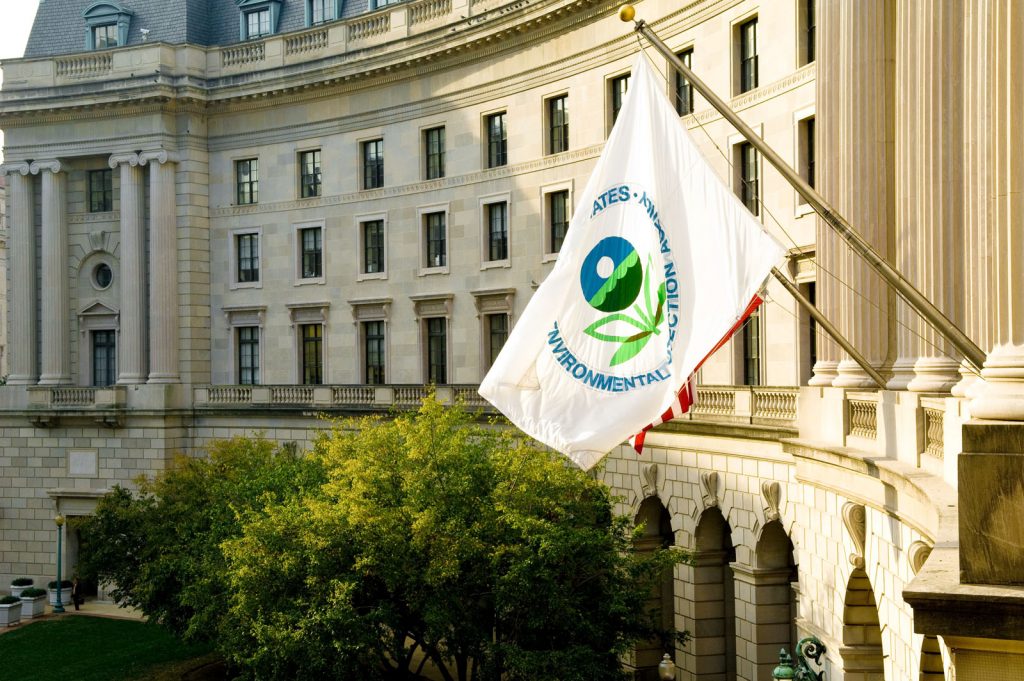
Lewis, J. 1985. The Birth of EPA. EPA Journal 11 (November 1985):6. https://archive.epa.gov/epa/aboutepa/birth-epa.html.
This EPA Journal article chronicles the events and socio-political ideologies leading to the EPA’s creation in 1970. Lewis describes the increased environmental consciousness in the 1960s. Rachel Carson’s “Silent Spring” discussed the use of pesticides that sparked environmental controversy. President Nixon formed several environmental committees. Eventually, in 1970, the Nixon administration created the EPA as a conglomerate of regulatory government groups, creating a new government agency. The EPA’s initial missions were to establish and enforce environmental protection standards, conduct environmental research, provide assistance to those combating environmental pollution, and assist the Council of Environmental Quality in developing and recommending to the President new policies for environmental protection.
US EPA. 2017, January 10. Timeline of Major Accomplishments in Transportation, Air Pollution, and Climate Change. https://www.epa.gov/transportation-air-pollution-and-climate-change/timeline-major-accomplishments-transportation-air.
This EPA web page provides a unique timeline of the agency’s major accomplishments as they relate to transportation, air pollution, and climate change from 1970 until the 2010s. Starting in 1970, the EPA played a crucial role in passing the initial Clean Air Act, requiring a 90% reduction in emissions by 1975. Air pollution milestones in the 1980s include amendments to the Clean Air Act and fuel volatility limits aimed at reducing evaporative emissions. The 1990s and 2000s brought more amendments to the Clean Air Act and continued regulation for the automobile industry.
US EPA. 2019, August 27. About EPA. https://www.epa.gov/aboutepa.
This EPA web page presents the mission of the EPA as well as information about the EPA administrator; headquarters offices; office of inspector general; regional offices; research centers, programs, and science advisory organizations; offices with a geographic focus; planning, budget, and results; and working with the EPA. A map of all EPA facilities around the US is provided as well as a box with featured resources like the EPA organizational chart, history, newsroom, and more.
International Conservation Agencies
Food and Agriculture Organization
FAO. 2019a. About FAO. http://www.fao.org/about/en/.
This web page provides an overview of the FAO, which is an agency of the United Nations focused on defeating hunger. It includes an interactive timeline that has videos highlighting notable historical events with short videos.
FAO. 2019b. Conservation Agriculture. http://www.fao.org/conservation-agriculture/en/.
This web page from the FAO highlights conservation agriculture practices. The page includes a definition of conservation agriculture, a fact sheet, and related links. Tabs on this page include an overview, impact, case studies, resources, news, and more.
FAO. 2019c. 2015 International Year of Soil. http://www.fao.org/soils-2015/en/.
The year 2015 was declared the International Year of Soils by the 68th UN General Assembly. The FAO implemented the celebration within the framework of the Global Soil Partnership in collaboration of governments and the secretariat of the UN Convention to Combat Desertification. This website dedicated to the 2015 International Year of Soil includes many resources designed to increase awareness of the importance of soil.
FAO. 2019d. Food and Agriculture Organization of the United Nations. http://www.fao.org/home/en/.
The FAO website provides a wealth of information about the FAO and the resources it provides to the world. This homepage provides highlights, data, main topics, publications, country showcases, and more.
FAO. 2019e. Sustainable Development Goals. http://www.fao.org/sustainable-development-goals/en/.
This web page is an overview of the FAO Sustainable Development Goals. It includes news, information for each of the 17 goals, highlights of partnerships, information on how progress is tracked, and indicators used.

